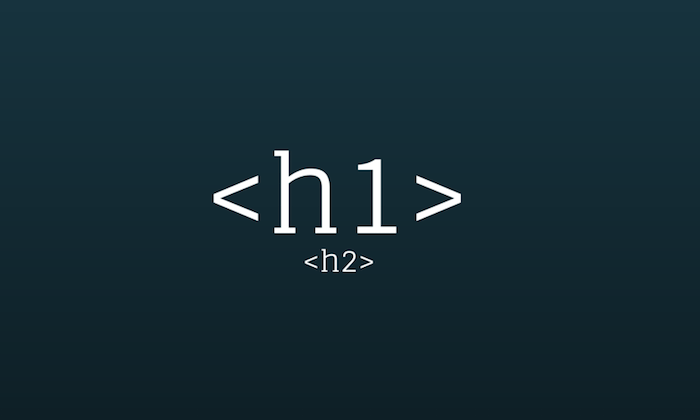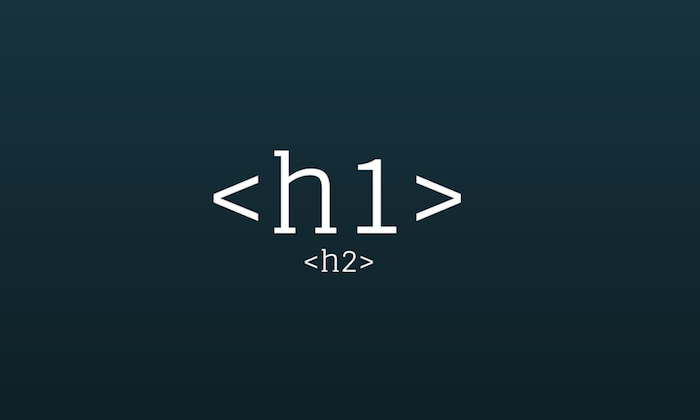
They state in SEO you require to utilize headings.
Those can be H1, H2, and even H3 tags.
But do they actually affect your rankings?
Sure, a great deal of CMS systems put headings on each of your websites by default. They do this with the title of the page (or post) and often to areas within a page.
But once again, the genuine concern is, do they aid with rankings?
.If they truly assist, #ppppp> I chose to run an enjoyable experiment to discover out.
.How the experiment worked.
Similar to previous experiments I ran, I connected to a part of my e-mail list to ask if they wish to get involved. Much like how I made with the one on blog site remark links and this one on link structure .
4,104 of you reacted wishing to take part. Unlike previous experiments, we just ran this one on sites that created at least 100,000 visitors a month from natural search.
.Since you can quickly inform if a modification had an effect on traffic, #ppppp> We chose bigger websites. With smaller sized websites, external elements can more quickly alter outcomes, particularly if a website just gets 100 visitors a month. One easy thing like a PR push might trigger double the visitors because case.
We likewise got rid of websites with seasonality and websites that weren’’ t a minimum of 3 years of ages. Once again, we simply wished to reduce anything skewing the outcomes.
For example, with young websites, they tend to grow much faster in natural traffic versus recognized websites … even when they do less SEO work due to the fact that they are beginning with a smaller sized base.
In the end, 61 websites fulfilled our requirements. It wasn’’ t a huge number, however each website typically has 426 pages.
.
Now with a conventional A/B test, you would reveal 50% of your visitors one variation and the other half a various variation. When it comes to SEO, you have to make a modification and as soon as Google indexes the modification you have to compare the outcomes to the previous 30 days.
So, with each website, we ran various tests at the very same time to see the effect of headings. With each website, we took their websites and divided them up in 4 groups:
.Control group –– we left these pages unmodified. Whether they utilized headings or not, we wished to see what took place to their natural traffic with time as it would provide us another standard to compare the results.Headings –– with this group, we utilized H1 tags for the title of the page, H2 tags for the subsections of the page, and even H3 and H4 tags if the subsections had subsections. Utilizing regular <
> text –– with all of the pages in this group, we ensured they were not utilizing headings. We made sure all of the font sizes were the exact same size.Using typical <
> text and changing font sizes –– with this group, we didn’’ t usage headings. Rather, we made certain various parts of the text remained in various typeface sizes. The title of the page was the biggest typeface size.
Before we dive into the outcomes, the last thing to note is the experiment ran for 90 days. Even though we were comparing outcomes of the pages we made the modifications to utilizing information from 30 days prior and 30 days after, keep in mind Google has to index the modification , so you have to account for that.
.Control group.
The control group saw a boost in traffic of 2.89%.
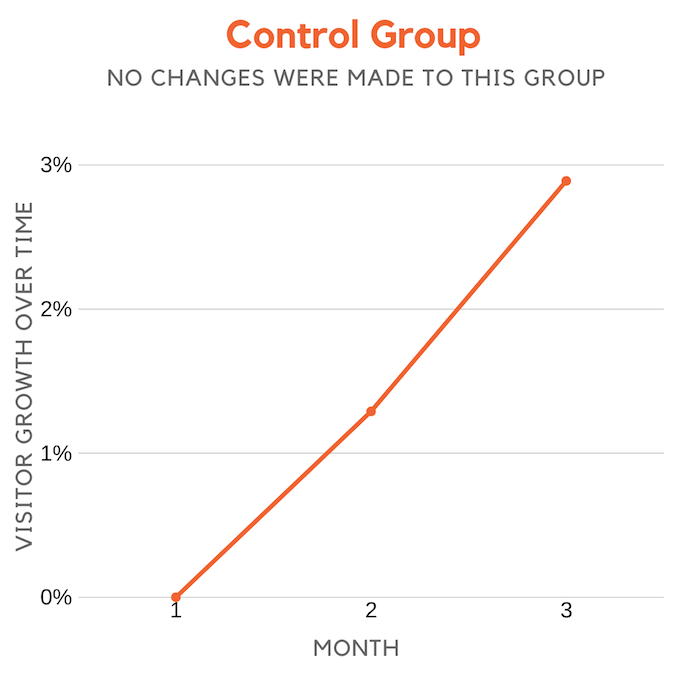
As I discussed above, no modifications were made to the control group. It reveals that they naturally grew in their rankings and search traffic over time.
This wasn’’ t much of a surprise either as 2.89% isn ’ t a big dive.
.Headings.
Now when I saw the outcomes of the group that was utilizing headings, the outcomes were practically what I anticipated …
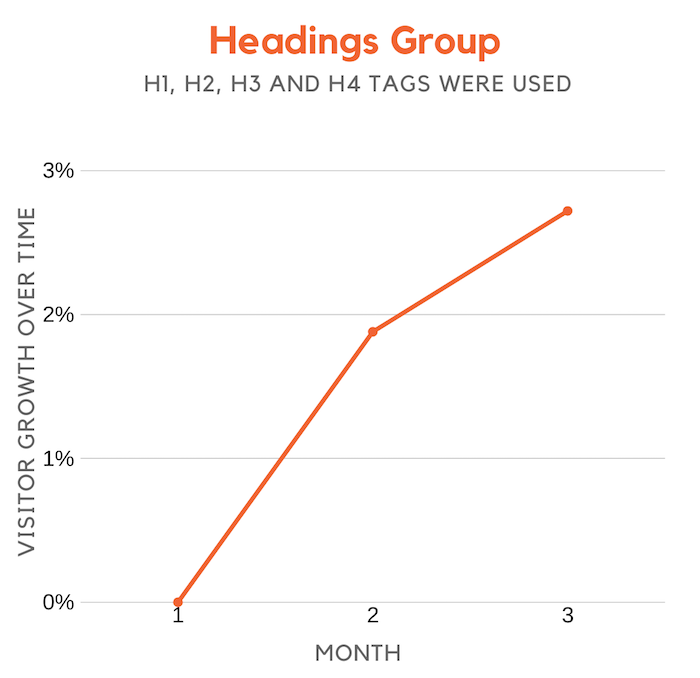
As you can see from the chart above, the in the past and after outcomes weren’’ t much of a modification when you compare it to the control group. Rather of a 2.89% gain, they had a 2.72% gain.
Keep in mind a few of the pages in the control group were naturally utilizing headings and some weren’’ t. Again, because group, we made no modifications.
.
But now as we dive into the next 2 experiments, you’’ ll see that the information gets intriguing.
.Utilizing typical <
> text.
What was intriguing about this group is that no headings were utilized. And on top of that, we made certain all of the font sizes on these pages were precisely the very same size.
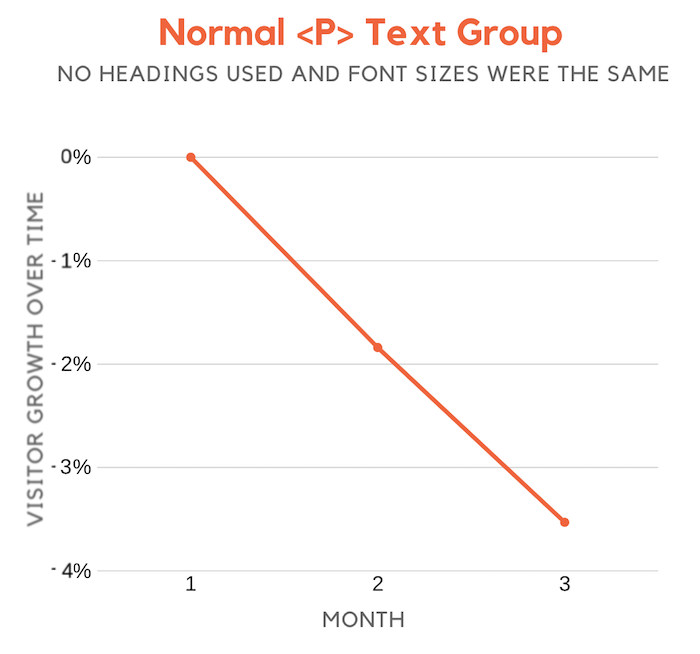
What we saw was a decline in traffic of 3.53%.
That doesn’’ t appear like a huge swing, however when you compare it to the control group that’’ s a distinction of 6.42%.
Now I wished to see if the drop in traffic was because of using headings or functionality. When you make all of the text on the page the very same size it affects use as well, due to the fact that you have to keep in mind that.
It makes the page less understandable. And we saw that as the typical time on page stopped by 12%. When it comes to the bounce rate, we didn’’ t see much of a modification.
.Utilizing regular <
> text and changing font sizes.
This group didn’’ t utilize any headings however they did utilize various typeface sizes on the page to keep the pages functional (understandable).
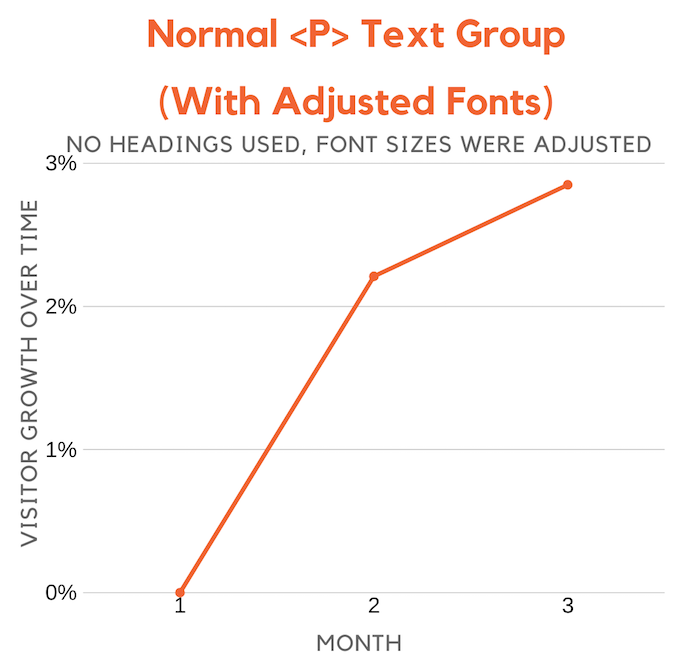
The chart reveals that this group saw a boost in traffic of 2.85%.
Although headings might not be the greatest SEO element, it does appear use is.
When font sizes on a page are bigger, it assists inform users and possibly online search engine what part of a page and even which keywords are more vital.
.Conclusion.
When you compare all 4 groups, the control had the biggest gains. It was irrelevant, and you have to keep in mind that a lot of the pages in the control group likewise utilize headings. That group simply had no modifications.
From what the information programs, it doesn’’ t appear like headings have a huge influence on rankings.
Maybe if I ran the experiment longer the information would have revealed otherwise, however my inkling informs me the information would be comparable.
One thing we didn’’ t shot was getting rid of headings from all pages of a website or including headings to all pages of a website that didn’’ t have any in the very first location. , if I were to re-run the experiment I would include in these 2 tests..
From what the information programs, Google does appreciate functionality. Having various font style sizes on a page assists inform the reader which components are more crucial than others. It likewise makes the page simpler to check out.
Whether you make sure aspects or words on the page stick out through big font sizes or headings, it’’ s clear that it is an excellent practice.
Now if I were you, I would still utilize headings due to the fact that it can be helpful for ease of access software application that assists users browse a page. Plus, it can possibly assist with other online search engine like Bing .
Plus with SEO, you aren’’ t visiting enormous gains from one single method like you utilized to be able to. It’’ s about doing every little thing. That’’ s why I advise you run your website through this audit and repair every mistake.
So, do you utilize headings on your website?
The post Do Headings Really Impact Rankings? appeared initially on Neil Patel .
Read more: feedproxy.google.com

